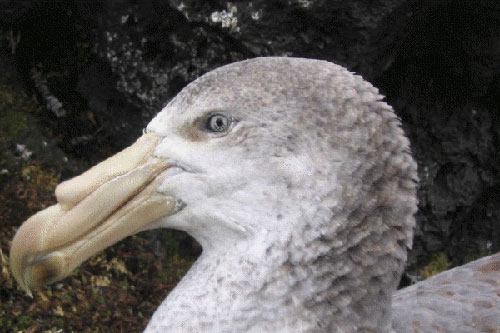Ruth Brown (Ecosystems Programme, British Antarctic Survey, Cambridge, United Kingdom) and colleagues discuss hybridization in giant petrels Macronectes spp. in the open-access online journal PLoS ONE.
The paper’s abstract follows:
“Hybridization in natural populations provides an opportunity to study the evolutionary processes that shape divergence and genetic isolation of species. The emergence of pre-mating barriers is often the precursor to complete reproductive isolation. However, in recently diverged species, pre-mating barriers may be incomplete, leading to hybridization between seemingly distinct taxa. Here we report results of a long-term study at Bird Island, South Georgia, of the extent of hybridization, mate fidelity, timing of breeding and breeding success in mixed and conspecific pairs of the sibling species,Macronectes halli (northern giant petrel) and M.giganteus (southern giant petrel). The proportion of mixed-species pairs varied annually from 0.4–2.4% (mean of 1.5%), and showed no linear trend with time. Mean laying date in mixed-species pairs tended to be later than in northern giant petrel, and always earlier than in southern giant petrel pairs, and their breeding success (15.6%) was lower than that of conspecific pairs. By comparison, mixed-species pairs at both Marion and Macquarie islands always failed before hatching. Histories of birds in mixed-species pairs at Bird Island were variable; some bred previously or subsequently with a conspecific partner, others subsequently with a different allospecific partner, and some mixed-species pairs remained together for multiple seasons. We also report the first verified back-crossing of a hybrid giant petrel with a female northern giant petrel. We discuss the potential causes and evolutionary consequences of hybridization and back-crossing in giant petrels and summarize the incidence of back-crossing in other seabird species.”

Northern Giant Petrel on Marion Island, photograph by Marienne de Villiers
With thanks to Richard Phillips for information.
Reference:
Brown, R.M., Techow, N.M.S.M., Wood, A.G. & Phillips, R.A. 2015. Hybridization and back-crossing in giant petrels (Macronectes giganteus and M. halli) at Bird Island, South Georgia, and a summary of hybridization in seabirds. PLoS ONE 10(3): e0121688. doi:10.1371/journal.pone.0121688.
John Cooper, ACAP Information Officer, 11 April 2015

 English
English  Français
Français  Español
Español